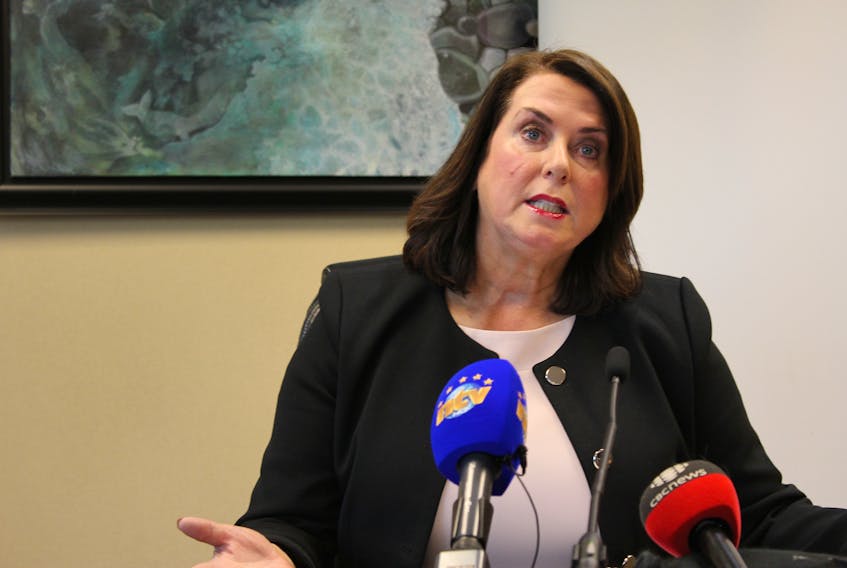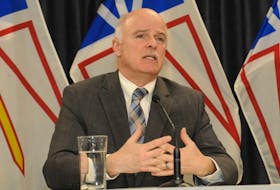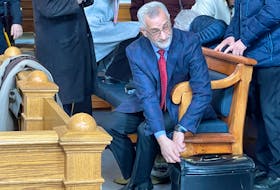The provincial government has a $744-million annual hill to climb if it wants to keep electricity rates where they are once the Muskrat Falls project is complete.
“We are cleaning up Muskrat Falls,” Natural Resources Minister Siobhan Coady told reporters on Tuesday.
“Now with that same determination and effort and attention, we will solve how to pay for Muskrat Falls. It is challenging, but it is not impossible.”
The Board of Commissioners of Public Utilities (PUB) interim report on rate mitigation was released Tuesday by the provincial governmen.
In order to keep electricity rates at the current average level of 12.26 cents per kilowatt hour, the government needs to find $744 million annually in revenue increases or expense reductions in order to offset electricity rate increases altogether. In order to keep electricity rates in line with the Atlantic Canadian average, the government still needs to find $342 million every year, if rates were to increase to 16 to 18 cents per kilowatt hour.
Coady says she’d like to see an initial rate mitigation strategy presented to the public before the impending provincial election.
“I think you must see it before the election. I’ll be quite frank to say that would be important for the people of the province,” said Coady.
The report says the provincial and federal governments need to rethink the financing arrangements of the Muskrat Falls project, including angling for a third federal loan guarantee to help increase the amount and term of debt related to the project.
“The new debt could reduce payments in the earlier years with repayment structured in the later years as other sources of mitigation become available,” reads the report.
“Any new debt financing would require obtaining a third federal loan guarantee from the Government of Canada and amending applicable financing agreements. The application of the debt proceeds could be timed to meet the greatest rate mitigation needs.”
"... we will solve how to pay for Muskrat Falls. It is challenging, but it is not impossible.” — Siobhan Coady, minister of natural resources
Coady says the province needs to determine what strategy to present to Ottawa when it comes to any changes with the debt. She also says there are no negotiations currently ongoing toward a third federal loan guarantee for the project.
The current term of the “mortgage” for Muskrat Falls is 50 years, so Coady says the government needs to explore whether it’s worthwhile to extend that timeline to 75 years or even longer.
Returns and dividends coming in from the project could also be adjusted to allow more money to flow toward rate mitigation, rather than into Nalcor revenues.
“Liberty noted that substantial returns of over $6 billion to Nalcor are forecast in the first 20 years of operation. These returns will be included in Hydro’s revenue requirement and will be recovered from customers in rates,” reads the report.
“Liberty noted that the returns and dividends will be small in the early years after commissioning, but very large annual growth is expected which will eventually offset more than half of the expected increase in rates in later years.”
The report says getting more public spaces, such as schools and hospitals, away from oil heating and onto electric heating is a way to lessen the burden on the average consumer.
Coady says some of those efforts are already underway, but more study is needed.
“Analysis is underway to say, ‘How much are we spending in oil for this hospital? What are the opportunities to move them from oil to electricity? Are there cost savings or cost implications?’” said Coady.
The report points at fat to trim at Nalcor and at Newfoundland and Labrador Hydro, specifically when it comes to the power supply division of Nalcor, which the report sees as having a number of “duplicative functions.”
Based on findings in Liberty consulting group’s initial report, the PUB says the executive and senior management level of Nalcor and N.L. Hydro’s operations can be examined to find cost savings, “broad duplication” of departments “having a high degree of commonality,” and “repetition of service partners to carry out day-to-day functions in multiple organizations.”
“We are doing a full series of work around electrifying vehicles. Not just for government, really, it’s all across the province." — Coady
Coady said there was always going to be changes to Nalcor once Muskrat Falls is complete, but the full-scale of the changes are still being studied.
Another avenue being examined is increasing availability and use of electric vehicles in the province.
“We are doing a full series of work around electrifying vehicles. Not just for government, really, it’s all across the province,” she said.
“This department is working on a renewable energy plan – we’re just starting that work – which will include the electrification of vehicles.”
Another question that remains to be answered: the separation of Nalcor’s oil and gas division.
Coady says extensive work has taken place since the initial announcement, with further details expected “very soon.” Coady still couldn’t tell reporters the name of the long-awaited “OilCo” on Tuesday.
“The expected rate impacts of the Muskrat Falls project are extraordinary by any measure,” reads the PUB’s conclusion of the report.
“While it is not possible to reach any conclusions as to the best approach in the circumstances, it is clear that some action is required to address these impacts.”
The final rate mitigation report from the PUB is due in January 2020.
Twitter: @DavidMaherNL
RELATED









